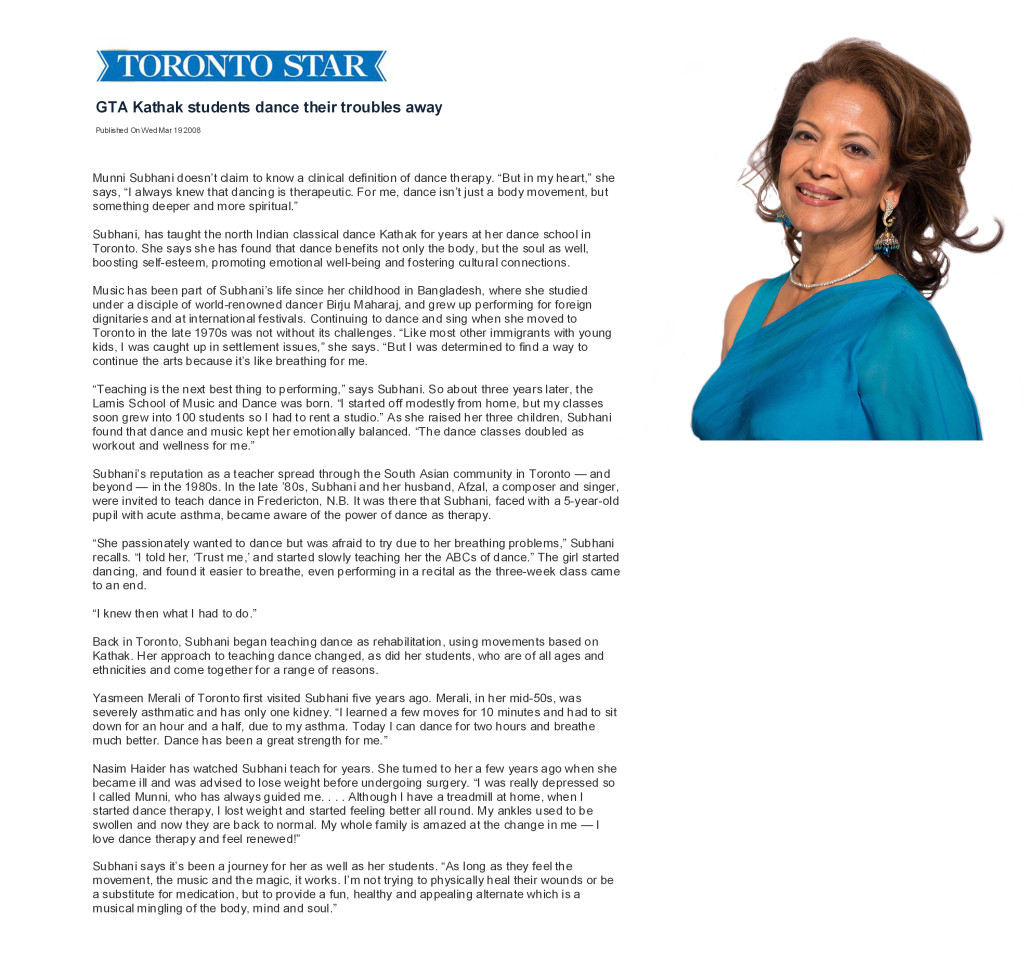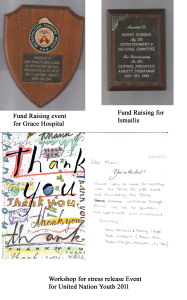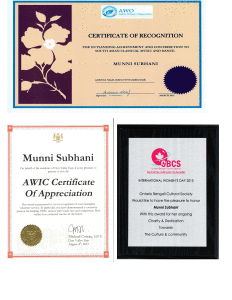THE GREATEST CONTRIBUTION TO THE COMMUNITY IS LETTING THE SENIORS ENJOY THEIR LIFE AND BE INCLUSIVE IN THE COMMUNITY WITH ALL THEIR CHALLENGES THEY HAVE…DANIEL , A PARKINSON SENIOR IS AN EXAMPLE OF SUCH A GREAT ACT OF BRAVERY.
In all the groups dance performances Daniel is in the middle and the only male senior . Please get a glimpse of his courage . Our next performance is for Canada Day at the Aga Khan Museum .
PROMOTING ART AND CULTURE OVER THE YEARS IN TORONTO
For details of Munni Subhani’s dynamic personality please click below:
Achievements Awards and Contributions
Awards and Appreciation Certificates

Transcript for the Article:
Toronto Star
GTA Kathak Students Dance Their Troubles Away
Munni Subhani doesn’t claim to know a clinical definition of dance therapy. “But in my heart,” she says, “I always knew that dancing is therapeutic. For me, dance isn’t just a body movement, but something deeper and more spiritual.”
Subhani, has taught the north Indian classical dance Kathak for years at her dance school in Toronto. She says she has found that dance benefits not only the body, but the soul as well, boosting self-esteem, promoting emotional well-being and fostering cultural connections.
Music has been part of Subhani’s life since her childhood in Bangladesh, where she studied under a disciple of world-renowned dance Birju Maharaj and grew up performing for foreign dignitaries and at international festivals. Continuing to dance and sing when she moved to Toronto in the late 1970s was not without its challenges. “Like most other immigrants with young kids, I was caught up in settlement issues,” she says. “But I was determined to find a way to continue the arts because it’s like breathing for me.”
“Teaching is the next best thing to performing,” says Subhani. So about three years later, the Lamis School of Music and Dance was born. “I started off modestly from home, but my classes soon grew into 100 students so I had to rent a studio.” As she raised her three children, Subhani found that dance and music kept her emotionally balanced. “The dance classes doubled as workout and wellness for me.”
Subhani’s reputation as a teacher spread through the South Asian community in Toronto – and beyond – in the 1980s. In the late ’80s, Subhani and her husband, Afzal, a composer and singer, were invited to teach dance in Fredericton, N.B. It was there that Subhani, faced with a 5-year-old pupil with acute asthma, became aware of the power of dance as therapy.
“She passionately wanted to dance but was afraid to try due to her breathing problem,” Subhani recalls. “I told her, ‘Trust me,’ and started slowly teaching her the ABCs of dance.” The girl started dancing and found it easier to breathe, even performing in a recital as the three-week class came to an end.
“I knew then what I had to do.”
Back in Toronto, Subhani began teaching dance as rehabilitation, using movements based on Kathak. Her approach to teaching dance changed, as did her students, who are of all ages and ethnicities and come together for a range of reasons.
Yasmeen Merali of Toronto first visited Subhani five years ago. Merali, in her mid-50s, was severely asthmatic and has only one kidney. “I learned a few moves for 10 minutes and had to sit down for an hour and a half, due to my asthma. Today I can dance for two hours and breath much better. Dance has been a great strength for me.”
Nasim Haider has watched Subhani teach for years. She turned to her a few years ago when she became ill and was advised to lose weight before undergoing surgery, “I was really depressed so I called Munni, who has always guided me… Although I have a treadmill at home, when I started dance therapy, I lost weight and started feeling better all round. My ankles used to be swollen and now they are back to normal. My whole family is amazed at the change in me – I love dance therapy and feel renewed!”
Subhani says it’s been a journey for her as well as her students. “As long as they feel the movement, the music and the magic, it work. I’m not trying to physically heal their wounds or be a substitute for medication, but to provide a fun, healthy and appealing alternate which is a musical mingling of the body, mind and soul.”



